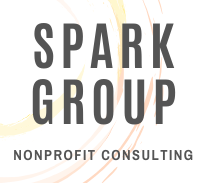Four Best Practices For Effective Donor Stewardship
There are three basic stages in a fundraising cycle: a) cultivation, b) solicitation and c) stewardship. This article will focus on donor stewardship and four best practices to encourage a recurring donation. The power of gratitude cannot be understated.
Do•nor Stew•ard•ship
noun
A donor relations process in which an organization acknowledges the gift expresses its gratitude for the donors’ contributions, reports back to donors about the impact of their gifts and offers donors engagement opportunities before they make additional gifts.
Sending a Heartfelt Acknowledgment
It is no surprise to the donors that a tax receipt is immediately provided upon making a gift. Even though this is an important IRS requirement that every organization should follow, donors should also receive a separate meaningful acknowledgment. We encourage nonprofit organizations to build a transformational relationship with their donors, not a transactional one. An acknowledgment could be a thank you email, a phone call, a handwritten note from a volunteer, a board member, or a staff member. That personalized acknowledgment message should read as if it was written effortlessly from the heart, and most importantly is to send it to the donor within 48 hours after receiving a gift.
Expressing Gratitude in Multiple Forms
There are different views on how much thanking a donor is too much. Is one-time good enough? How about at least seven times to encourage a recurring gift? They say, “You can never thank someone too much,” which is true, but your expression of gratitude should be spread out over time and be expressed in different forms. It is more about sincerity than redundancy. First, it starts with a personalized thank-you message within 48 hours of a gift. Then take that next step further by strategically expressing your appreciation through some customized relationship-building activities (depending on the gift amount), such as taking the donor out for a coffee or inviting them to exclusive events. Making your donors feel valued and appreciated after making a gift are likely to give again.
Reporting the Impact of a Gift
Donors would love to hear how their gifts make a difference. This can be done through a storytelling piece or an impact report. As you put together a donor-centric story, placing the donors as the hero of the story, be sure to share how the gifts made a meaningful impact on the community they helped. You could interview someone who has benefited from your work, ask a volunteer to share what it was like to work with your organization, or reach out to top donors and ask how donating to your organization has affected them personally. Reporting back to the donors is a great way to build transparency and trust in how donations were spent and attract more supporters.
Offering Opportunities to Remain Engaged
The biggest mistake any organization could make after receiving a gift is not keeping loyal donors engaged. We call this donor retention. Ongoing contact with existing donors is easier than trying to attract new donors. You could ask donors to subscribe to your upcoming newsletter or social media channels, invite them to upcoming events, or even ask them to volunteer. The intention is to keep donors updated with what’s going on in the community and for donors to identify more reasons to continue to be involved.
Again, expressing gratitude comes in different forms, but how do you build an effective donor stewardship program? One way to keep your organization organized is to establish a gratitude matrix. Below is a sample.
Establishing a gratitude matrix helps you respond to donors at varying levels to show your gratitude and keep donors engaged before asking them to donate again. It can also help you strategically prepare your donors to upgrade their gifts or for loyal donors to help you attract new supporters. Small gestures of appreciation go a long way!
Do you need help with crafting acknowledgments, organizing donor-centric impact reports, or designing an effective donor stewardship program? Spark Group Consulting can help! Schedule a free 30-minute chat today.
⭐ Join our weekly newsletter where we share tons of exclusive tips, tools, grant opportunities, and resources to our subscribers. Subscribe on the Spark Group home page.





